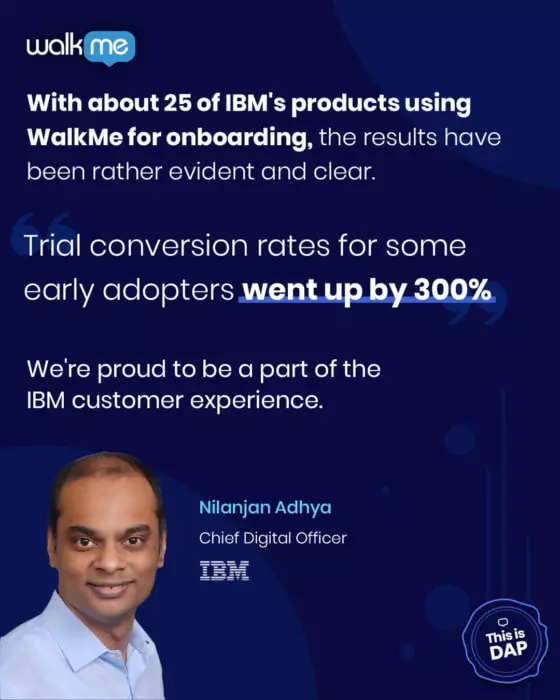As businesses continue to become more digitally-oriented, and the employee experience is shaped by technology, leaders face (and will continue to face) many challenges around their digital transformation process. Let’s break down the main hurdles that slow down business digital transformation, and how to tackle them effectively.
1. Complexity
Technology is constantly rolling out new tools to help users navigate and better optimize their existing tools.
We are at a point in our collective user journey where we are dependent on our digital tools to keep businesses running. Still, we are also unable to fully use (or adopt) the tools at our disposal, without additional tools.
This is the digital transformation challenge of complexity. Multiple systems have been layered on top of each other, which could inadvertently reduce productivity.
Multiple systems are confusing, overwhelming, and humans are simply not able to navigate them all at once.

To overcome this digital transformation challenge, find ways to simplify and streamline your digital systems. This doesn’t necessarily mean getting rid of the software, but rather seeing your system as a holistic whole. The different platforms need to be connected in order to create a seamless employee experience that can drive effective business results.
2. Digital Adoption
A new software tool always means onboarding your employees. The digital transformation challenge here is emphasizing the human in this equation: the employee. Successful digital transformation effort puts the human experience at the center of all processes.
The decision to invest in a new tool is carefully made. You analyzed the data and decided that this was the best move for your business — to increase employee productivity or drive customer retention. But without true adoption, that expensive tool with sky-high promise, is going to drag you down, rather than take you further.
For a deeper understanding of how you can achieve such digital excellence, check out Futurum Research’s “Enterprise Guide to Digital Adoption“.
Digital tools tend to vary by interface, functions, features, and usage. It can not be assumed that employees will simply pick up the necessary skills based on experience with similar platforms. This is the gap between human beings and the technology that we’ve created. Top businesses, like Hewlett Packard, Red Hat, and PwC use a Digital Adoption Platform (DAP) to accelerate onboarding, enable self-service support, provide actionable insights, and ultimately, to ensure positive ROI on investments.

3. Culture mindset shift
Digital transformation is not just about software upgrades. It’s about transforming the way we work and live to internalize the potential of digital tools and to embody a digital-first mindset without losing sight of the human experience.
Employees that used to spend a lot of time with customers may now spend more time with their technology, and it’s important to create a culture that does not harbor resentment or distrust over a more technological workplace. It’s imperative to understand and relay how digital tools create a more efficient and positive outcome for both employees and customers.
This means working with HR to create an experience that motivates employees through their technology. Again, if the tools are bogging employees down, even just emotionally, you will not see positive results for your business. The mindset shift must start with leadership and trickle down into the core of the company culture.
4. Pace
Another digital transformation challenge is keeping up with the latest technologies, and on the other side of the coin, keeping up the number of transformations occurring internally.
Anticipate automation by creating new roles where technology complements human work rather than simply replacing it. Rather than displace jobs, these new tools should pioneer a way to engage individuals and push collaboration with technology further. For example, 5G is here. It will inevitably shape the next wave of digital transformation initiatives. Are you ready? Are you waiting for your competitors to adopt and utilize 5G first?

The challenge to keep pace is real, but the only way to stay ahead of the curve is to invest in a digital strategy and maintain a leadership mindset of agility.
The pace is only picking up speed, so this challenge needs to be faced head-on. Make sure you are equipped for a reality of constant change.
5. Competing priorities
A business always has a running checklist of “urgent” initiatives that you need to take care of and you can only pursue so many initiatives at once without spreading your resources and focus too thin. The challenge is choosing which ones to bring to life. Remember, digital transformation is a marathon, not a sprint.
Although it’s important to focus on one project at a time, it’s also worth examining if there are solutions that could impact and accelerate multiple initiatives, or solve multiple challenges at the same time.
Digital adoption challenges are often the deeper root cause of seemingly surface issues. If salespeople for example are struggling to close deals before target accounts move on to competitors, you might assume that there is something lacking in your salespeople’s training, or that you need additional software to speed up the closing process. In reality, you might have excellent salespeople and all of the tools that they need, but you are in fact missing a Digital Adoption Platform to unify the multiple software systems and create a quick and seamless experience for your salespeople.
If there was ever a solution that could address multiple organizational challenges all at once, it’s assessing your digital adoption strategy.
6. Security
Successful digital transformation requires a transformation of security as well. Some of the largest companies in the world have fallen victim to cyber attacks. We now know that security must be embedded directly into all applications.
Much like putting off an overdue doctor’s appointment, many companies choose to delay strengthening their security systems until it is too late. According to Gartner, through 2020, 99% of vulnerabilities exploited will continue to be ones known by security and IT professionals for at least one year.
COVID-19 propelled businesses large and small to assess their on-prem systems and finally move to the cloud. Cloud migration takes application security to the next level, especially when all of your software systems reside in a singular, unifying Digital Adoption Platform.
Instead of seeing security as a digital transformation challenge, see it as a proof of the need to accelerate digital transformation initiatives. No leader wants to look back after a security disaster and say “we could have prevented that.” Take this pandemic as an opportunity to prioritize your security and make your business as safe and trustworthy as possible for your customers.
7. Defining Success
The productivity paradox, first articulated in the 1970’s, describes the phenomenon that despite the influx of computer technology, actual productivity was stagnant. If technology is supposed to make us more productive, why don’t we see gains in productivity? Studies have continued to show that the way we measure productivity may be the problem.
A recent Gartner report on remote productivity monitoring technology made this point even more relevant in this unprecedented time of remote work.
Before setting out on your digital transformation journey, sit down and define precisely what you wish to see by way of transformative efforts. Organizations must define what success looks like in the context of digital transformation.
To find the answers to the complex question of “what is our unique vision of success?” start with your promise to your customers. What values does your product support? What results does your product deliver? And what obstacles are you facing in delivering?
Instead of solidifying an end goal, work on clarifying your vision in terms of values, and flexible deliverables. For example, if your product is a sales enablement tool, your successful digital transformation might look like being a name as popular as Salesforce and one that delivers trusted sales support. No matter what surprises 2021 might offer, your goal can remain steadfast: stay a trusted brand that delivers sales support and develop your brand.
This formula can be applied to any business and any product.
Get comfortable with continuous change
Digital transformation is a long game. Don’t get paralyzed by the daunting nature of it, rather be inspired and motivated by its many opportunities for business evolution and success.


